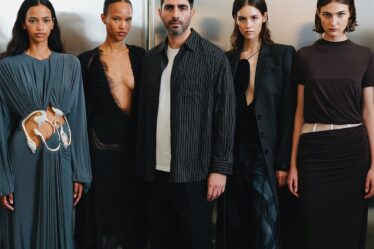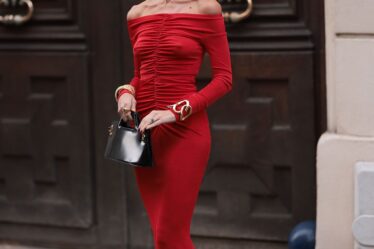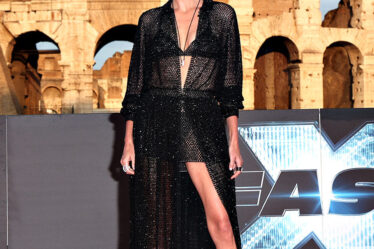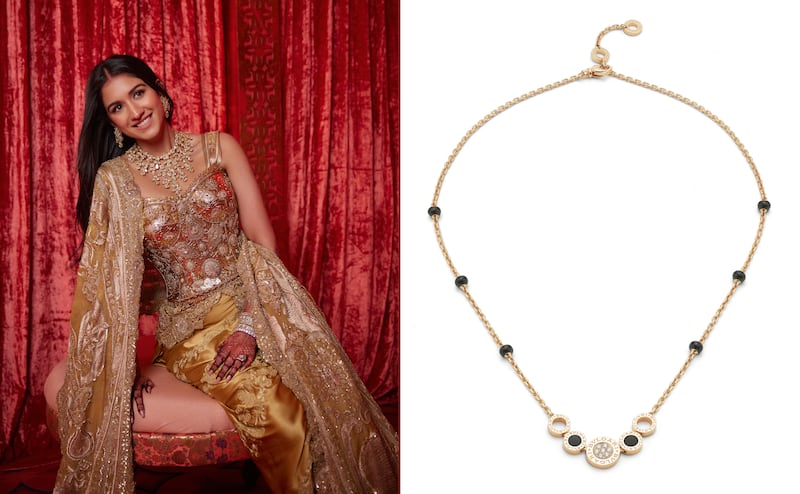
This summer’s marriage between Anant Ambani, the son of Asia’s richest man Mukesh Ambani, and Radhika Merchant put the global spotlight on Indian weddings like never before. With performances by pop stars and a guestlist of billionaires, world leaders and celebrities laden with oversized jewels, couture gowns and luxury goods, the event served as a potent reminder that the country’s wedding customs amount to very big business.
India’s wedding industry is now worth $130 billion, nearly twice the size of the American industry, though still smaller than China’s, according to a report by investment bank Jefferies. With 8-10 million weddings held in the country annually, India has become the largest wedding destination in the world.
The Ambanis’ lavish display was in another league compared to the everyday pageantry afforded by the budget of the average couple, but most Indians follow the same approach when spending for their big day. Whatever their income bracket, they go all out.
“In an otherwise value-conscious society, Indians love to spend on weddings, which could be disproportionate to their level of income or wealth,” confirms the Jefferies report, estimating that the average expenditure for luxury weddings falls within the range of 20 million to 30 million rupees ($240,000 to $360,000), with the higher end of the luxury wedding spectrum often exceeding these figures by several multiples.
“Weddings have truly been one of the most steadfast, centuries-old components of Indian culture. There is almost a silent understanding, passed down through generations, that the wedding is going to have to be very special,” said Priya Tanna, president of The Right Side, a creative agency under the Reliance Retail umbrella that creates events such as The Wedding Collective shopping expo in Mumbai, and other ventures.
Another reason for the high cost is that a typical Indian wedding calendar spans multiple days and includes a roster of events. With a need for different outfits for each of these events, attendees of Indian weddings typically prepare larger wardrobes than attendees of western weddings.
“What has been absolutely mind-blowing and spectacular is how the entire phenomenon has rebirthed, compounded and magnified in recent times,” added Tanna, who was previously the launch editor-in-chief of Vogue India. “Indian weddings have become so much bigger in every sense, and people are planning every single [outfit] down to the last detail.”
The festivities usually begin with a roka or engagement event months before the marriage. Other key occasions bookend the main event, as pre-ceremony fetes and pujas (religious ceremonies) and as after-parties. In a multi-faith, multi-cultural country like India, these are often determined by religious beliefs and customs. Some key events include, but are not limited to, the haldi (a ceremony of applying turmeric paste to the couple), mehendi (henna party), sangeet (the traditional song-and-dance party), wedding ceremony and reception.
With India’s main wedding season around the corner, global brands will soon be looking to tally up their sales and check whether their efforts to tap this lucrative but complex and underserved market have paid off.
Opportunities in the wedding wardrobe
For both the couple and their guests, traditional silhouettes are still the go-to choice for key events during wedding festivities, no matter what community one hails from. These include lehengas, saris, shararas and anarkalis for the women and sherwanis, bandhgalas and kurta sets for the men.
The enduring appeal of these traditional garments for nuptials helps explain why bridal wear has long generated a significant proportion of revenues for many Indian designers. Apart from legacy names like Sabyasachi, Abu Jani Sandeep Khosla, Anita Dongre, Manish Malhotra and Tarun Tahiliani among others, younger designers are also gaining popularity including those who champion a different design language or approach to Indian crafts and silhouettes.
“There is a change in how modern Indian brides are dressing. They are making empowered choices, want to look different, and want their clothes to tell a story,” says Anaita Shroff Adajania, one of India’s biggest stylists. “So, a lot of our designers are working on mobility, and making lehengas lighter while still looking heavy. There is also great development in heritage craft and a huge return to handwoven textiles,” she adds.
Even with the importance laid on traditional clothing, there has been a conspicuous shift in the sartorial mood board in recent years. Inspiration for weddings has expanded from primarily Bollywood-driven sources to also include real brides on Instagram, international red carpets and Hollywood celebrities.
This signals the perfect opportunity for international luxury brands to capitalise on these and other changes by helping clients identify the right wedding occasion to wear their clothes and accessories. The fringe events—everything from the bridal shower and welcome dinner to the cocktail party—are the best place to start. Brands should also keep in mind that some grooms opt for suits and tuxedos for some of their wedding events.
“There was always a western wear component to the Indian wedding. Earlier it was called a ‘youngsters party’. Now there is a newer spin on what one can wear to the various events,” Adajania explained.
Designer Masaba Gupta, for instance, wore an Alaïa gown with traditional south Indian jewellery for her wedding reception last January. For Saanchi Gilani’s destination wedding in 2022, the influencer wore a Self-Portrait dress for her welcome lunch, and Alexander McQueen and Nadine Merabi for her after-parties.
“While the Indian clientele for couture from international brands is limited, there’s a huge demand for ready-to-wear — not just from the couple, but also their families and wedding guests,” added Adajania. The brands worn by the women of the Ambani family at this summer’s many pre-wedding events included Versace, Roberto Cavalli, Miss Sohee, Giorgio Armani, Valentino, Ashi Studio, Dior and Chanel to name just a few.
The rise in high-profile cross-cultural weddings and mixed-faith couples with their unique reimagining of traditional events is also worth noting. The import of western wedding customs plays a part too. A small but growing number of Indian brides now add an extra event to their wedding roster to be able to wear a white gown, even if it’s not of cultural significance to them.
Then there are fashion-forward couples and guests, who mix Indian celebration wear with pieces from international brands to create their own take on festive fashion.
Experimenting with collaborations
Collaborations between international and Indian designers are one potential way forward. For her reception, Radhika Merchant wore a look created by couturier Anamika Khanna in collaboration with Dolce & Gabbana styled by Rhea Kapoor. Khanna worked with a corset from the Italian brand’s latest Alta Moda collection, making a concept sari and matching stole for it, and sprucing up the existing corset with matching elements.
This shows how “Indian weddings are taking a turn, [with people] open to new ideas and not afraid of experimentation anymore,” said Khanna. “A whole world has opened up, and international brands can easily adapt to look at this market in many different ways.”
Even with all the newfound opportunities for Indo-western and western silhouettes, nothing will beat the popularity and significance of traditional clothes at Indian weddings. Over the years, some international brands have understood this and tried dabbling with them.
Canali created its own version of the classic men’s bandhgala as early as 2009, calling it the ‘Nawab jacket’. A brand representative told BoF that it was created “to celebrate Indian weddings and nobility.” Atelier Versace designed a couture lehenga for fashion influencer Sonam Babani’s wedding rehearsal dinner in Switzerland in 2022.
The Ambani wedding too was a conduit for many such ideas — from haute couture and high jewellery to a variety of unique collaborations — that are bound to impact the look of many Indian weddings moving forward.
One such moment was when Isha Ambani Piramal wore a first-of-its-kind sari by Schiaparelli for her brother’s wedding. “It was very collaborative, where the maison worked with a mood board we shared, retaining the essence of the sari but having all the signature elements of Schiaparelli as well,” said Adajania, who was her stylist. Ambani Piramal, director of Reliance Retail Ventures, was also the first and so far the only bride known to wear a lehenga by Valentino, which was created for her wedding in 2018.
Shloka Ambani too was seen in one such collaborative look — a custom ivory sari by couturier Tamara Ralph. “Couture clients from India have been growing steadily for us for some time now,” said Ralph, who has designed over 20 bespoke pieces for Indian weddings including a take on the lehenga for actor Sonam Kapoor Ahuja back in 2018, when the brand went by the name Ralph & Russo. “The request is for a variety of silhouettes, but predominantly for Indian looks.”
“What is quite crucial to this market specifically is the collaborative element. It’s a layered process to incorporate elements from Indian culture while also staying true to myself as a designer,” added Ralph, noting that the pieces tend to be heavily embellished with intricate details due to the ornate nature of Indian weddings.
But since not every global brand may have the know-how or inclination to present their own take on the lehenga or sari, “a collaboration [with an Indian designer] is a great direction,” advises Tanna.
The business model is already seeing success in the accessories market. Tod’s recently released its collaboration with designer Rahul Mishra, a line of leather accessories featuring Mishra’s signature intricate embroideries. Back in 2017, Christian Louboutin and Sabyasachi Mukherjee collaborated on a line of footwear and accessories made from archival sari fabrics from the Indian couturier’s atelier.

Louboutin opened a wedding suite dedicated to bespoke services for brides at his Mumbai flagship store as early as 2014; last year he released a capsule collection called ‘The India Wedding Edit’.
Such limited edition ‘India exclusives’ for the festive and wedding seasons are now considered table stakes by market observers. India-focused drops by brands like Gucci, Jimmy Choo and Dior can serve as blueprints for others to follow.
But brands also need to think beyond formulaic offerings in metallic hues or shades of pink. The key is to deepen one’s understanding of the Indian consumer mindset, with well-timed, well-intentioned launches that go beyond clichés.
Room for jewellery maisons to grow
While wedding expenditure is spread across everything from event management and catering to entertainment and myriad other categories, 10 percent is directed towards clothing and a whopping 50-55 percent goes for jewellery, according to Jefferies.
Not only does jewellery make up the largest chunk of the Indian bride’s trousseau, but it also serves as a popular category for wedding gifts to the couple, parents-in-laws and, at luxury weddings, as wedding favours to close guests.
Though most jewellery worn and gifted at Indian weddings tends be heavy traditional jewellery from family jewellers and local brands, modern brides and family members are also now considering practically and versatility. Many actively seek out a few jewellery items that can be worn not only to accessorise outfits at wedding events but also to double up for everyday occasions, including recognisable pieces from international brands.
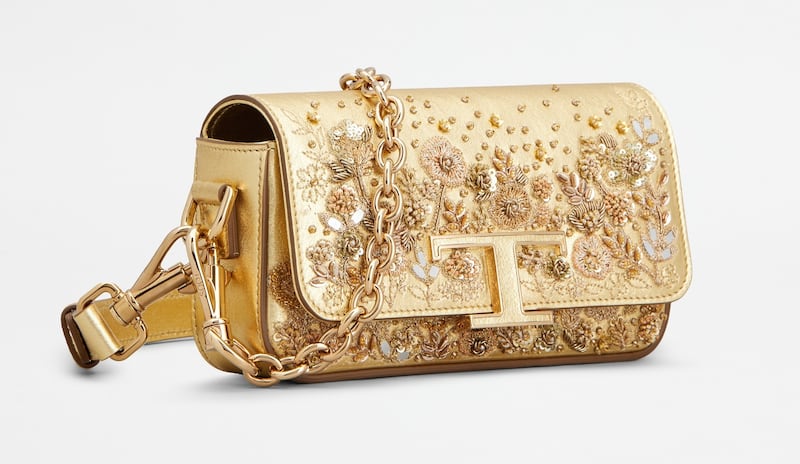
“There is an increasing prestige value associated in buying from heritage brands like Cartier, Bulgari or Tiffany’s because brides feel like they are investing in future heirlooms,” says Adajania.
Bulgari, for one, has been actively localising its offering to tap into this growing market. The brand has created products like a mangalsutra (a necklace that grooms of certain communities traditionally tie around the bride’s neck during the pheras ritual) and a special edition of the B.zero1 bracelet for men marketed as a kada bangle. Earlier this year, the brand also extensively promoted its connection to the country, hosting a private showcase of archival navratna jewels inspired by nine celestial gems sacred to Indian culture, and themed it around the festival of colours, Holi.
“Indian brides are increasingly open to shopping for jewellery from international brands, appreciating more and more the unique craftsmanship, global appeal, and distinctive designs that we offer,” said Mauro DiRoberto, managing director of Bulgari’s jewellery business unit, confirming that the brand has identified an opportunity to “create jewels specifically for Indian weddings…that resonate with [our customers’] rich traditions and contemporary tastes.”
Rewriting the marketing playbook
How brands reach wedding shoppers in India is just as important as the marketing messages they employ. Apart from standalone stores, private appointments and online retail, another feature of this market is the popularity of wedding shows and expos.
These B2C exhibitions bring together brands across categories like fashion, jewellery, gifts, F&B, décor, trousseau essentials and more under one roof for a period of one-to-three days, providing a one-stop experience. It’s a format that has seen success for decades.
One of the pioneers, Bridal Asia has marked its 25-year anniversary, and now counts exhibitions across Mumbai, Delhi, Ahmedabad and Kolkata. Vogue India launched its Wedding Show back in 2013. Reliance Retail, a unit of the Ambani-owned conglomerate that has deals with global luxury brands, an upmarket shopping mall and investments in Indian designer brands, launched its own showcase called The Wedding Collective in August.
Such events allow brands to engage with a targeted audience for their wedding-centric offerings while helping them delve into the consumer psyche. Although local brand exhibitors still dominate these events, a few global names have also started to take part.
At a four-day event this month dubbed Treasury of Trousseau at the Delhi luxury mall DLF Emporio, Bulgari presented its new mangalstura 2.0 collection. The Wedding Collective event had a dedicated booth by Bicester Collection, the global retailer that operates designer outlet shopping centres. At the same event, online retailer Ajio Luxe’s booth targeted events like the bridal shower, bachelorette party and honeymoon, with collections from Marc Jacobs, Cult Gaia and Aquazzura.
Wanting to fully capitalise on the Indian wedding market ultimately boils down to seriously committing to it, says Adajania, advising brands to invest in far more than a token Indian wedding outfit or accessory during the festive season.
“Brands need to first understand the market and then infiltrate it in creative ways,” said Adajania, citing examples of locally shot marketing campaigns and developing “a unique language that contextualises the brand’s clothing and jewellery” for India.
“It doesn’t need to be traditional, but it needs to move beyond presenting a western view,” she concluded. “It’s important to show customers how a global brand can fit into our weddings, because not everyone has the ability to imagine it.”

